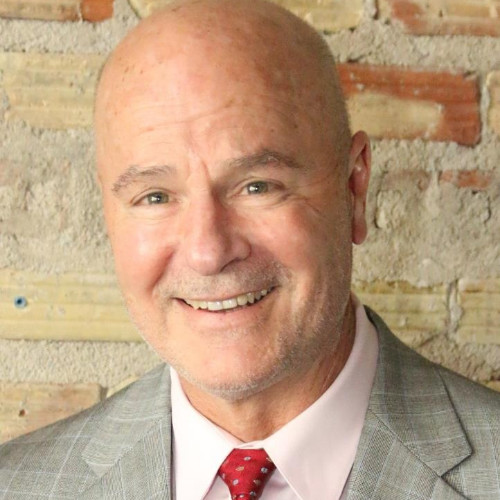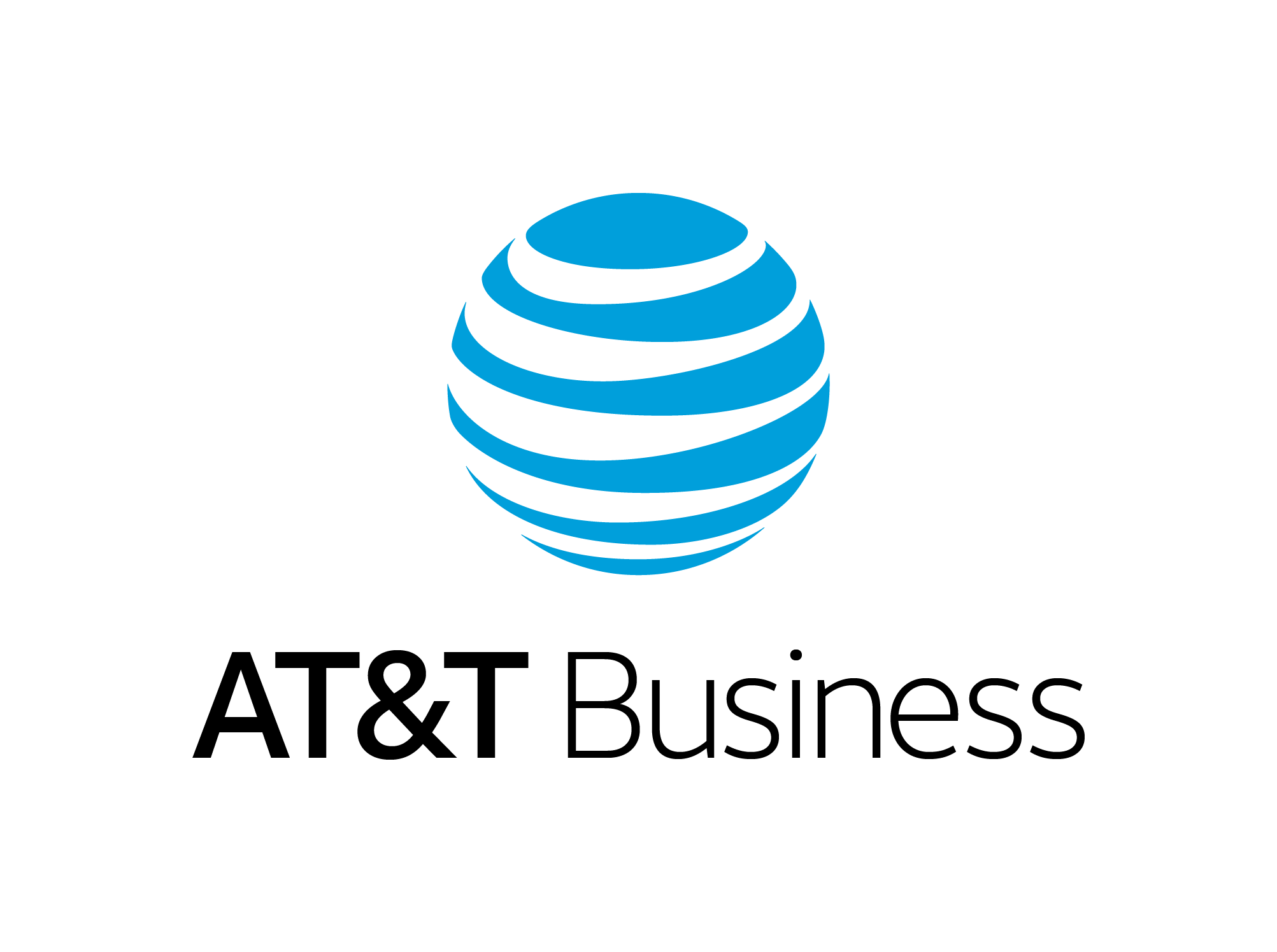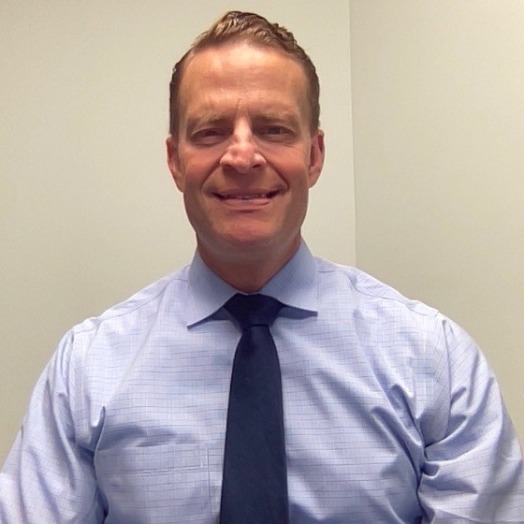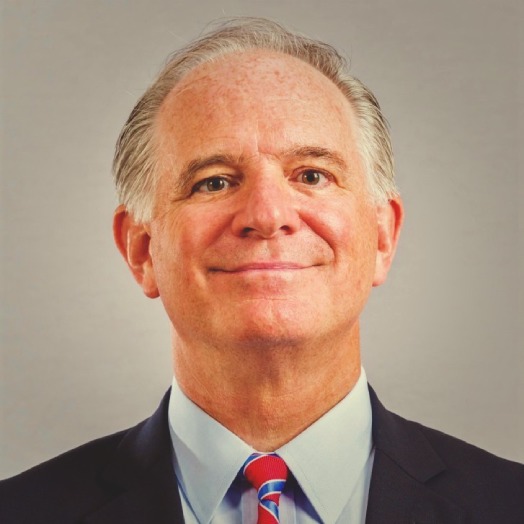











NG Healthcare Digital Summit
The COVID-19 pandemic disrupted healthcare and reinforced the need to improve physician and patient experiences, quality of care and financial outcomes.
Connect with leading Healthcare experts on business-critical challenges and disruptive technology and drive your industry forward collaboratively.

Colin Cosell
Why Attend
New connections
Build new connections with likeminded senior leaders
Business trends
Stay current with emerging business trends
Key takeaways
Downloadable and actionable takeaways
New partnerships
Accelerate key projects through meaningful new partnerships
Insights
De-risk new projects by gaining a broad range of insights
New technologies
Understand the impact new technology can make



















Trusted by
We host global organizations with the conversations that matter. That’s why we’re trusted by these top brands.
Event Agenda
09:00 - 09:15
Opening Remarks
Intro & Diamond Commentary
09:15 - 09:45
Keynote
Achieving the Best Outcomes- Leadership Opportunities
We all know that the goal of health care industry is to advance health outcomes for all patients. Today’s leaders face many new challenges that may require adjustment of their previously successful strategies. In the plenary, we will take stock the industry’s track record for achieving health outcomes, examine current opportunities, and propose key areas of focus for leaders to consider. For many, developing a new roadmap for improving outcomes is daunting and I plan to show you that success is within your reach.
09:45 - 10:25
Panel Discussion
The Future of Connective Care
As healthcare continues to transform, the way we provide care—from managing health for those with chronic conditions, to providing care virtually—will drastically change. Providers and patients both want better digitally- connected care, but there are several barriers that must be addressed, including challenges related to underserved populations, rural communities, senior adults, and those with health inequities. Health systems are also working alongside health plans to determine how to move forward with virtual care and in- person delivery options, as it relates to value- based care contracting. During this session, panelists will engage in an interactive discussion on: what is driving the “Care Anywhere” trend and why it’s important for equity of access to care, some of the barriers and challenges related to connective care, and the real- world benefits that virtual care programs can offer.
10:25 - 10:35
Insight Break
Achieving the Best Outcomes- Leadership Opportunities
Healthcare is often portrayed as being slow to adopt technology. But arguably, no other industry has such a diverse, and critical set of network and internet connected devices. From MRI machines to self-registration kiosks, wearable biosensors to smart elevators. A fragmented approach to security could lead to adverse outcomes. Innovation is at an all-time high and so is the threat.
Discussion points:
•Take a view into the diverse types of devices within a hospital ecosystem
•Overview of the current threat landscape around connected devices.
•Share how to leverage specific NIST frameworks to identify threats and vulnerabilities to assist in implementing mitigating controls to minimize the risk
10:35 - 11:25
Roundtables
Track 1: How to Elevate the Collaborative Care Model to Support Those With Severe Mental Health Needs
Sponsor:
While Collaborative Care has expanded the expertise and integration of mental health in primary and specialty care, there’s still work to be done to help those with high severity needs get the right level of efficient and effective care. This session will guide roundtable participants in a discussion around value drivers to uplevel the current Collaborative Care model that will improve access to care for those with severe and complex cases, and acute needs, at scale.
Questions to Answer in this Roundtable Include:
•What are the barriers to mental health care presented by the current collaborative care model?
•What are the benefits and drawbacks to the patient experience in the current collaborative care approach?
•At present, where do you currently refer/send high-severity mental health patients?
•How long does it take for severe mental health patients to get the appropriate level of care under the current collaborative care model?
•What type of patients are not good candidates for the collaborative care model? How do those patients get the appropriate level of care?
•How do you currently partner with mental health specialists to gain access to care for severe mental health conditions?
•What kind of data, or integration, would be useful to understand the value in specialty care?
•What type of payment models would incentivize health providers to integrate specialty services for severe mental health needs into their care model? How can we remove barriers to these integrations?
•How does providing access to mental health care resources improve primary care providers and family practice clinicians productivity and well-being?
Track 2: Improving Frontline Clinician Experience with Technology
Sponsor:
Clinicians are experiencing tremendous levels of stress, anxiety, and depression. As technology leaders we have a duty to leverage our technology expertise to bolster their clinical efficiency. Healthcare technology is meant to bridge the gap to provide a better care experience for both patients and clinicians. The rise in technological capabilities offers an opportunity to enhance healthcare efficiency, boosting patient satisfaction and outcomes, streamlining access to care and services and lowering costs.
The adoption of these technologies by healthcare workers can be variable, with most end-users stating concerns about the efficacy and the product's true impact on the quality of care. Many experts consider health information technology key to improving healthcare efficiency and quality1. Multiple articles have concluded that health information technology improves patient safety by reducing medication errors, reducing adverse drug reactions, and improving compliance to clinical protocols and practice guidelines.
The future of care delivery exists at the intersection of clinicians and technology; therefore, health systems must integrate clinician experience into their overall technology strategy. The adoption of digital solutions will be instrumental in simplifying administrative tasks, expanding access, advancing outcomes, and reducing costs.
Questions to answer in this Roundtable might include:
•What has been your experience with implementing Healthcare Technology for the frontline clinical staff? What tools have you found that improve healthcare efficiency? How would you improve on that experience when deploying new technology?
•How have you adjusted workflows and data aggregation – i.e., the User Interface - to identify opportunities to improve clinician experience and capabilities? What lessons can you share?
•How have you addressed the incomplete or not readily accessible patient data shortfalls that contribute to a lack of the full picture of the patient condition? How have you addressed interoperability issues between platforms to ensure that digital patient data is used to its fullest potential?
•How have you gained clinician acceptance of digital technology? What lessons can you share regarding thoughtful implementation that supports the clinicians’ workflow of triaging, diagnosing, ordering, documenting, and reporting that enable clinicians to accept the digital transformation and align with their organization’s digital vision?
•Have you implemented, or considering the use of Telehealth to extend your highly skilled nursing and clinical workforce with remote or virtual capabilities? What features does your EHR, or any other ancillary system provide in terms of global surveillance of your hospital population?
•How are you using Artificial Intelligence (AI) and other technology to improve the clinician experience, customize care delivery and keep patients healthy?
•What challenges have you faced in adherence to CMS regulatory reporting requirements for various clinical conditions (e.g., CLABSI, CAUTI, Sepsis, VTE, readmissions, and others)? What internal changes have you made to address clinical quality challenges during and after the pandemic?
Track 3: Enabling Better Payer & Provider Collaboration
Greater payer-provider alignment is needed for the U.S. health care system to achieve high-quality, affordable care. One of the positive results of the pandemic has been increased collaboration among hospitals and health insurers around the country. But the value of collaboration isn’t limited to crises. It can be a mechanism for improving quality and reducing costs in normal times. While we’re currently in a recovery phase, provider-payer collaboration absolutely will be a critical part of a rebuilding phase that comes after recovery, and provides an opportunity to retool the system into something even better. Hospitals and health systems must foster transparent, collaborative relationships to enhance case management and care coordination, ultimately improving outcomes and lowering costs.
Interoperability is the key to success for provider organizations under value-based contracts. Access to timely, actionable data is essential for quality and process improvements, as well as demonstrating performance to payer organizations. Value-based payment doesn’t have to be a zero-sum game: Providers can achieve healthy margins while payers decrease risk and associated costs. The key to realizing value is for providers to partner closely with payers to develop models that support data sharing, high-quality care, and reduced waste.
Questions to answer in this roundtable include:
•How are you working with payers to manage your patient population and how has it changed because of the pandemic?
•How has the pandemic improved relationships between payers and providers?
•How can the sharing of data be used to better enable payer/provider collaboration?
•What are your thoughts on transparency and information exchange, as they relate to clinician relationships and the development of clinical pathways?
•What are some of the risks and concerns with collaboration? What are some of the hurdles to overcome?
•Are there any particular third party companies or products that have helped you with better collaboration or information sharing? Is investing in these products a priority?
•Should payers offer financial incentives to providers for better collaboration? How can payers help increase collaboration?
•How can payer/provider collaboration create success with the value- based care model?
11:25 - 11:30
Short Break
11:30 - 12:10
Masterclass Breakouts
Unify Patient Data: How to Elevate the Care Journey with Personalized Engagement
85% of U.S. consumers wish their healthcare experiences were more personalized and 80% of patients prefer to use digital communication to interact with healthcare providers and brands. The time to modernize and personalize patient engagement and their care journey is here.
eCommerce, travel, and finance have led the way and proven personalization can boost customer acquisition, conversion, satisfaction and retention. Yet, health care organizations have been limited in how they can collect and activate customer data at scale due to regulatory constraints around PHI.
Join this session to learn how Segment’s HIPAA-eligible customer data platform unifies patient data to enable data-driven decisions that improve patient outcomes. You’ll learn how the most innovative health care companies:
•Combine offline and online data into a single patient profile to better understand the care journey
•Optimize website and app experiences through analytics on tracked events
•Build analytics for funnel analysis to reduce patient churn across all touchpoints
•Improve ROAS for enrolling eligible patients who need your services
12:10 - 12:40
Headline Keynote
Connecting the Dots – Leveraging AI Technology to Reclaim the Patient-Physician Relationship
The demand for AI technology to help address challenges in care delivery, quality and outcomes is surging. Healthcare organizations require intuitive, innovative solutions that redefine the healthcare experience for patients, physicians, and administrators, alike. During this fireside chat, Nuance’s Chief Clinical Product Officer, Jared Pelo, will have a conversation with Alfred Atanda, Jr., MD, pediatric orthopedic surgeon with Nemours Children’s Hospital to uncover current obstacles his organization and team are facing, what technology factors they consider to drive innovation and support the clinical documentation process as well as the intersection of technology ad physician wellness.
09:00 - 09:15
Opening Remarks
09:15 - 09:45
Keynote
#MentalShift to Build a People-Centric HR Strategy
The extreme and extended pressures of the pandemic, war, and the economy have significantly impacted each healthcare worker and thereby the workforce, leaving the industry now battling staffing shortages, recruitment and retention challenges, clinician burnout and more. Beyond these challenges, a new generation of workers with different expectations and motivations is disrupting the workforce. Healthcare leaders must now work to help shape the healthcare workforce of the future by creating the best possible experience for their employees and looking at ways to refuel, rejuvenate and refresh their workforce.
Join this session for timely discussion on:
•Burnout in healthcare is different than in other industries
•The WHO model
•Evaluating your initiatives
•From philosophy to action
09:45 - 10:25
Panel Discussion
Revolutionizing the Patient Experience and Accelerating Consumer - Centric Care
10:25 - 10:35
Insight Break
Fresh Perspective: How Data Storage Solutions can Reduce your Cybersecurity Risk
How can you reduce the financial impact of security incidents by 90%? Learn how Pure Storage is delivering innovative, healthcare ecosystem- enabled solutions to deliver measurable decreases in the time it takes to detect & respond to cyber security events, and get back to the business of taking care of people.
10:40 - 11:30
Roundtables
Track 1: How to Elevate the Collaborative Care Model to Support Those With Severe Mental Health Needs
Sponsor:
While Collaborative Care has expanded the expertise and integration of mental health in primary and specialty care, there’s still work to be done to help those with high severity needs get the right level of efficient and effective care. This session will guide roundtable participants in a discussion around value drivers to uplevel the current Collaborative Care model that will improve access to care for those with severe and complex cases, and acute needs, at scale.
Questions to Answer in this Roundtable Include:
•What are the barriers to mental health care presented by the current collaborative care model?
•What are the benefits and drawbacks to the patient experience in the current collaborative care approach?
•At present, where do you currently refer/send high-severity mental health patients?
•How long does it take for severe mental health patients to get the appropriate level of care under the current collaborative care model?
•What type of patients are not good candidates for the collaborative care model? How do those patients get the appropriate level of care?
•How do you currently partner with mental health specialists to gain access to care for severe mental health conditions?
•What kind of data, or integration, would be useful to understand the value in specialty care?
•What type of payment models would incentivize health providers to integrate specialty services for severe mental health needs into their care model? How can we remove barriers to these integrations?
•How does providing access to mental health care resources improve primary care providers and family practice clinicians productivity and well-being?
Track 2: Improving Frontline Clinician Experience with Technology
Sponsor:
Clinicians are experiencing tremendous levels of stress, anxiety, and depression. As technology leaders we have a duty to leverage our technology expertise to bolster their clinical efficiency. Healthcare technology is meant to bridge the gap to provide a better care experience for both patients and clinicians. The rise in technological capabilities offers an opportunity to enhance healthcare efficiency, boosting patient satisfaction and outcomes, streamlining access to care and services and lowering costs.
The adoption of these technologies by healthcare workers can be variable, with most end-users stating concerns about the efficacy and the product's true impact on the quality of care. Many experts consider health information technology key to improving healthcare efficiency and quality1. Multiple articles have concluded that health information technology improves patient safety by reducing medication errors, reducing adverse drug reactions, and improving compliance to clinical protocols and practice guidelines.
The future of care delivery exists at the intersection of clinicians and technology; therefore, health systems must integrate clinician experience into their overall technology strategy. The adoption of digital solutions will be instrumental in simplifying administrative tasks, expanding access, advancing outcomes, and reducing costs.
Questions to answer in this Roundtable might include:
•What has been your experience with implementing Healthcare Technology for the frontline clinical staff? What tools have you found that improve healthcare efficiency? How would you improve on that experience when deploying new technology?
•How have you adjusted workflows and data aggregation – i.e., the User Interface - to identify opportunities to improve clinician experience and capabilities? What lessons can you share?
•How have you addressed the incomplete or not readily accessible patient data shortfalls that contribute to a lack of the full picture of the patient condition? How have you addressed interoperability issues between platforms to ensure that digital patient data is used to its fullest potential?
•How have you gained clinician acceptance of digital technology? What lessons can you share regarding thoughtful implementation that supports the clinicians’ workflow of triaging, diagnosing, ordering, documenting, and reporting that enable clinicians to accept the digital transformation and align with their organization’s digital vision?
•Have you implemented, or considering the use of Telehealth to extend your highly skilled nursing and clinical workforce with remote or virtual capabilities? What features does your EHR, or any other ancillary system provide in terms of global surveillance of your hospital population?
•How are you using Artificial Intelligence (AI) and other technology to improve the clinician experience, customize care delivery and keep patients healthy?
•What challenges have you faced in adherence to CMS regulatory reporting requirements for various clinical conditions (e.g., CLABSI, CAUTI, Sepsis, VTE, readmissions, and others)? What internal changes have you made to address clinical quality challenges during and after the pandemic?
Track 3: Enabling Better Payer & Provider Collaboration
Greater payer-provider alignment is needed for the U.S. health care system to achieve high-quality, affordable care. One of the positive results of the pandemic has been increased collaboration among hospitals and health insurers around the country. But the value of collaboration isn’t limited to crises. It can be a mechanism for improving quality and reducing costs in normal times. While we’re currently in a recovery phase, provider-payer collaboration absolutely will be a critical part of a rebuilding phase that comes after recovery, and provides an opportunity to retool the system into something even better. Hospitals and health systems must foster transparent, collaborative relationships to enhance case management and care coordination, ultimately improving outcomes and lowering costs.
Interoperability is the key to success for provider organizations under value-based contracts. Access to timely, actionable data is essential for quality and process improvements, as well as demonstrating performance to payer organizations. Value-based payment doesn’t have to be a zero-sum game: Providers can achieve healthy margins while payers decrease risk and associated costs. The key to realizing value is for providers to partner closely with payers to develop models that support data sharing, high-quality care, and reduced waste.
Questions to answer in this roundtable include:
•How are you working with payers to manage your patient population and how has it changed because of the pandemic?
•How has the pandemic improved relationships between payers and providers?
•How can the sharing of data be used to better enable payer/provider collaboration?
•What are your thoughts on transparency and information exchange, as they relate to clinician relationships and the development of clinical pathways?
•What are some of the risks and concerns with collaboration? What are some of the hurdles to overcome?
•Are there any particular third party companies or products that have helped you with better collaboration or information sharing? Is investing in these products a priority?
•Should payers offer financial incentives to providers for better collaboration? How can payers help increase collaboration?
•How can payer/provider collaboration create success with the value- based care model?
11:30 - 12:00
Innovation Exchange Keynote
How Innovation in Payer & Provider Collaboration Can Improve Outcomes
During this discussion, Dr. Beejadi Mukunda, M.D.- VP & Market CMO, Ohio from CareSource, will discuss how innovation in payer and provider collaboration can improve community outcomes. Within his presentation, Dr. Mukunda will share a couple of case studies surrounding electronic submission of pregnancy risk assessment forms (PRAF) as well as diabetes self-management education (DSME) and continuous glucose monitoring (CGM). The aim of these two programs is to lead to better outcomes for the populations affected; the PRAF will assure timely healthcare and connection to resources in the community and through the MCOs, while the aim of the DSME and CGM programs is to improve glycemic control of members via education and awareness of resources available to manage their diabetes better.
12:03 - 12:33
Closing Prime Keynote
Care Redesign- Houston Methodist's Transformation Journey
Houston Methodist is on a journey to create the smartest hospital yet, which will “leverage digital tools to improve consumer experiences, forge stronger patient- provider relationships, and make it easier for providers to deliver high- quality care and better outcomes” (dhinsights.org). On that journey is Dr. Sarah Pletcher, System Vice President & Executive Medical Director, Strategic Innovation. Dr. Pletcher leads Houston Methodist on strategy, development, acceleration and execution of new care models and innovations that will move the health system into its next decade. During this keynote, Dr. Pletcher will highlight the clinical programs and the current portfolio of virtual service lines that have redesigned and digitally transformed the organization. She will also discuss the guiding principles surrounding centralization, automation, and the overall importance of investing in strategies that will enhance both the patient and employee experience as we move into 2023 and beyond.
09:00 - 09:15
Opening Remarks
09:15 - 09:45
Keynote
The ABC's of Medicare, Stars, & Value - Based Contracting
Gregg Kunemund will discuss the tremendous growth in the Medicare Program with over 11,000 people aging in daily and the challenges of managing care for seniors while improving health outcomes.
With over 60 million Medicare eligible, the Medicare Trustees project Medicare spending will grow from current GDP 3.9% for 2022 to 6.2% in 2045. Medicare Advantage Plans will play a vital role in extending the life of Medicare by focusing on wellness programs, partnering with physicians by giving data on their patients, and moving from Fee-For-Service contracting to Value Based Contracting that will reinforce paying for performance to improve patient outcomes while increasing Medicare beneficiary satisfaction.
09:45 - 10:25
Panel Discussion
Digital Transformation: Improving Outcomes and Caregiver Retention in the Post-Acute Homecare Segment
In the last decade, digitization has been key to transformation and achieving more affordable, accessible, and high- value care. While digital transformation has been a central pillar in promoting transformation for the major healthcare players, post- acute care providers have been excluded and/ or delayed in benefitting from these investments, due to their somewhat limited financial resources. Today in the US, two- thirds of all hospitalized patients will be re-hospitalized or die within a year, with the cost of readmissions exceeding $17B annually. Tackling this problem requires payers and providers to incorporate more technology and enhance and healthcare’s reach outside of the hospital to improve post- acute care. Additionally, care costs continue to rise due to staffing challenges, and staffing efficiency is a key area in need of improvement. Join the panelists as they describe how post- acute care is changing, how technology is delivering a variety of benefits for both the patient and care team, and what the implications are for providers and payors alike.
10:25 - 10:35
Insight Break
10:40 - 11:30
Roundtable Leaders Panel
11:40 - 12:10
Innovation Exchange Keynote
Massive Real World Data - Comparing Practice to Policy
Dr. Hoffman is an expert in using large scale de-identified clinical data to understand subtle patterns in healthcare. This presentation will discuss the use electronic health record (EHR) data from more than 100 non-affiliated organizations to identify variations in lab test utilization, medication ordering (including opioids) and therapeutic dosing to identify opportunities for process improvements. He will also discuss how it is important for data scientists to understand the workflows (including EHR system implementations) that influence complex clinical data.
12:11 - 12:41
Closing Keynote
Every Patient Deserves Exceptional Outcomes
"The “customer is king”, and highly reliable health systems must continue to invest in the needs of individual patients to build the loyalty and trust necessary to achieve the best outcomes in health care and in health. Achieving exceptional outcomes is engaging to both the patient, who is the recipient of those outcomes, and to the care team that is ensuring those outcomes. By providing better health care and better health to individual patients, communities will be healthier. Achieving true improvement in population health requires purposeful programs that ensure quality outcomes, close gaps in care, ensure an excellent patient experience, and achieve health equity.
Join Dr. Andy Anderson, Chief Medical Officer & Chief Quality Officer at RWJBarnabas Health, as he discusses the following:
Why?
•Achieving exceptional outcomes connects with purpose, mission, and values
•The health of populations will improve
How?
•Coordinated, integrated care that is organized through a comprehensive health system and centered in primary care
•Focus on access, social determinants, and health care disparities
What?
•Standardized, best practice initiatives to improve patient experience, improve quality outcomes, close gaps in care, and achieve health equity
•Timely, accurate and actionable data to enable better decision making
Who?
•Accountable leaders
•Engaged team members
An immersive
event experience
interactive features including:
Audience Interaction
Engage with a virtual live audience just as you would at a physical event and create meaningful conversations.
Interactive Live Polling
Keep engaged through interactive live polling and gamification tools.
Direct connections
Ask your questions face-to-face with the speakers via our leading stage technology.
Relationship building
Build stronger connections with leading executives that you will take with you through your career
Thought Leadership
Content and insight from industry experts when it matters most
Intelligent interaction
Interactive quizzes gamify your experience
Have a question…
There is no cost associated with attending a GDS Summit. In return, we ask that all senior executives in participation attend for the full duration to ensure that all attendees get maximum value and insight from the interactive roundtables, live Q&As and breakout networking sessions.
Our digital summit portfolio is designed to bring together senior decision makers from large global businesses and innovative disruptor brands to drive industry forward through addressing business critical challenges collaboratively.
If you’re keen to build new connections with likeminded leaders, de-risk your projects through new insight and establish new partnerships that can accelerate your projects then apply to attend today.
Complete our form below if you’re interested in attending the summit and you meet our application criteria. A member of the GDS team will then reach out to run you through the programme and event format and discuss your participation.
On stage: co-host a panel discussion with a group of likeminded senior executives or host a solo keynote presentation. Both slots include elements of interactive audience Q&A
Off stage: become a roundtable moderator, leading the discussion with the same cohort of executives for the duration of the summit around a specific topic you’ve agreed to focus on during the roundtable session.
We can tailor a partnership package to help meet your business objectives. This might include brand awareness, driving traffic to your site or quality editorial content via exclusive interviews and Q&As with our executive audience. Enquire today for more information.





















































































